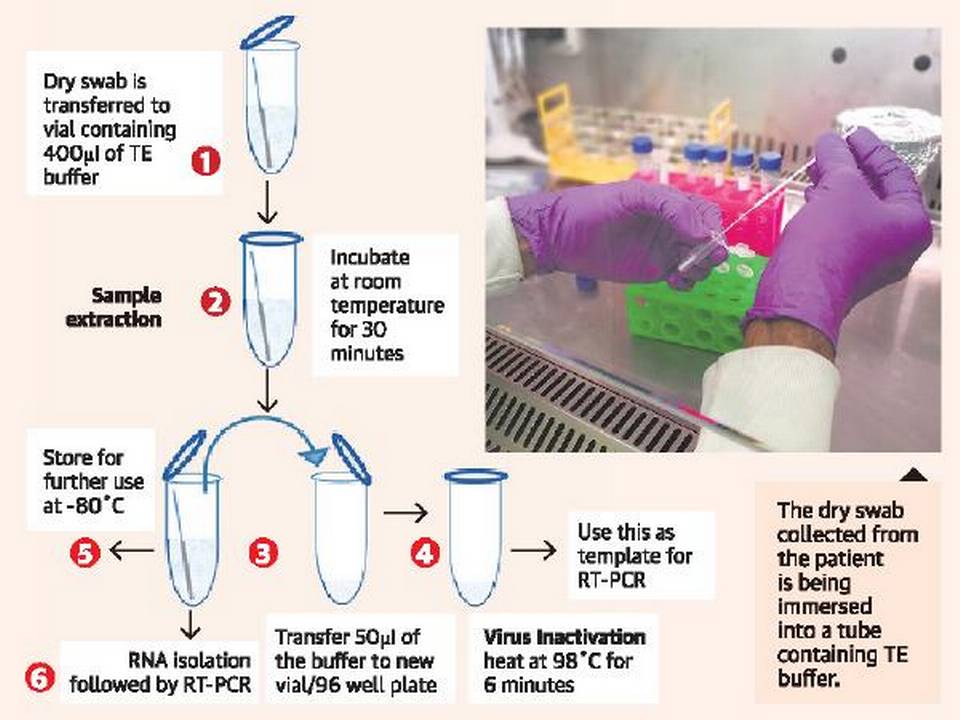Focus: GS-III Science and Technology
Why in news?
- Currently, the preferred protocol for testing uses the RT-PCR (Reverse Transcription-Polymerase Chain Reaction) test which is times consuming and expensive.
- Researchers have studied methods using RT-PCR with dry swabs which helps in bypassing the RNA isolation stage reducing time consumed and expense.
Why was this needed?
- In the usual method of testing, nasal swabs collected from a person are placed in a viral transport medium (VTM).
- From this, a part of the liquid is taken, the viral RNA is extracted and RT-PCR test is carried out.
- The remainder is stored. It is the step of isolating the RNA that takes time and is expensive.
- The standard method is also known to have a problem of false negatives.

What is RT-PCR?
- Real time RT-PCR is a nuclear-derived method for detecting the presence of specific genetic material from any pathogen, including a virus.
- Originally, the method used radioactive isotope markers to detect targeted genetic materials, but subsequent refining has led to the replacement of the isotopic labelling with special markers, most frequently fluorescent dyes.
- With this technique, scientists can see the results almost immediately while the process is still ongoing; conventional RT-PCR only provides results at the end.
- While real time RT-PCR is now the most widely used method for detecting coronaviruses, many countries still need support in setting up and using the technique.
-Source: Hindustan Times



